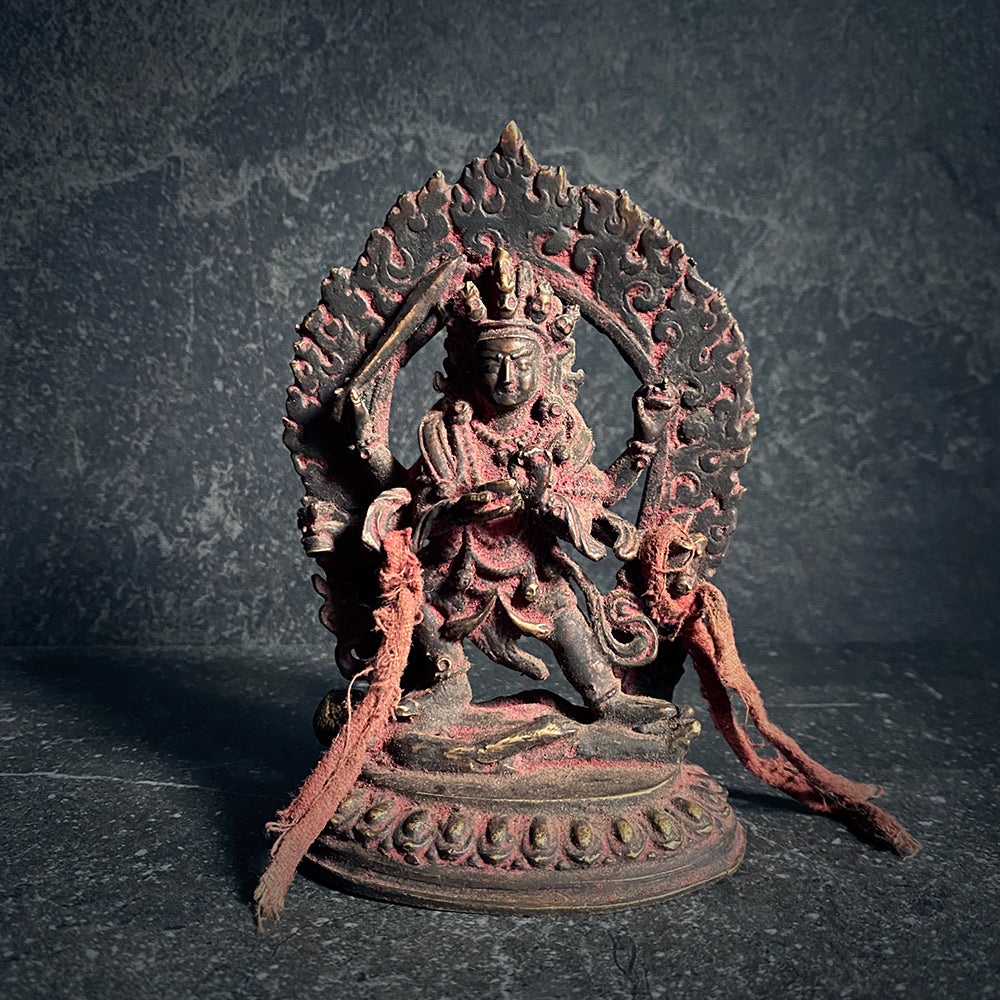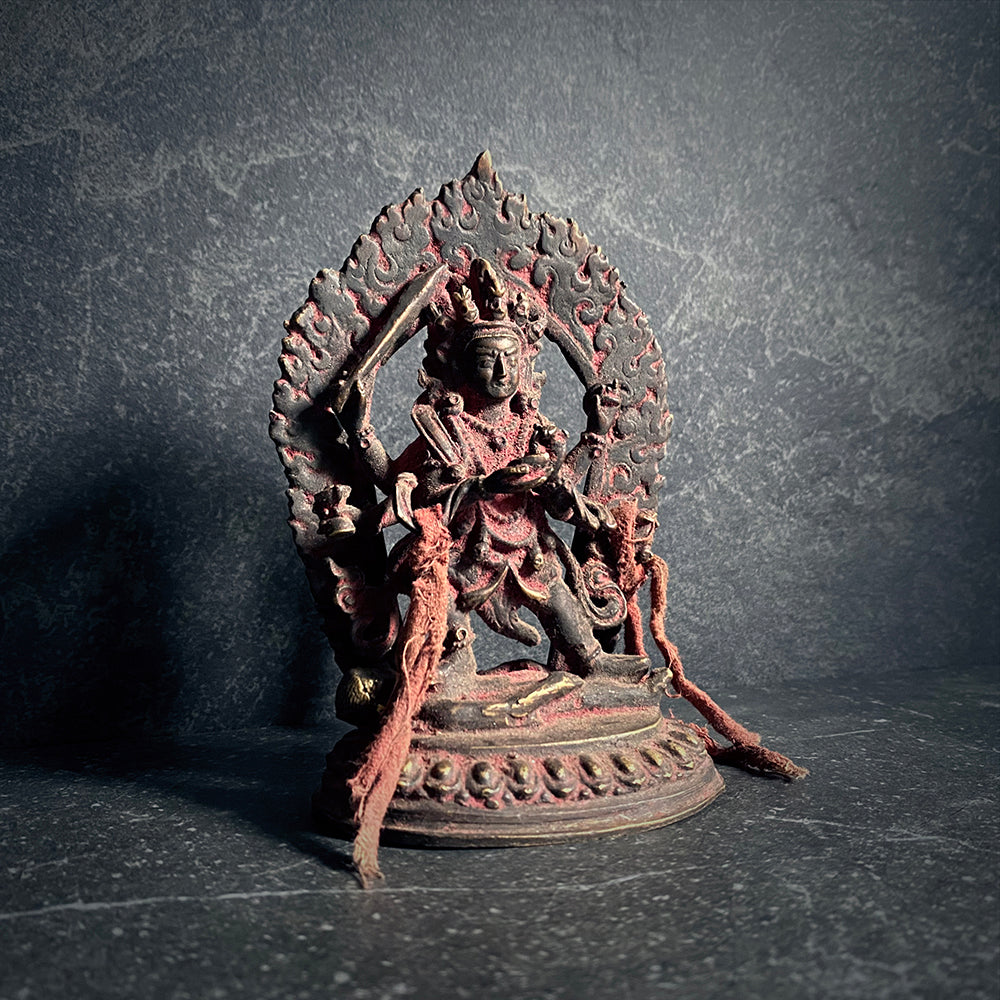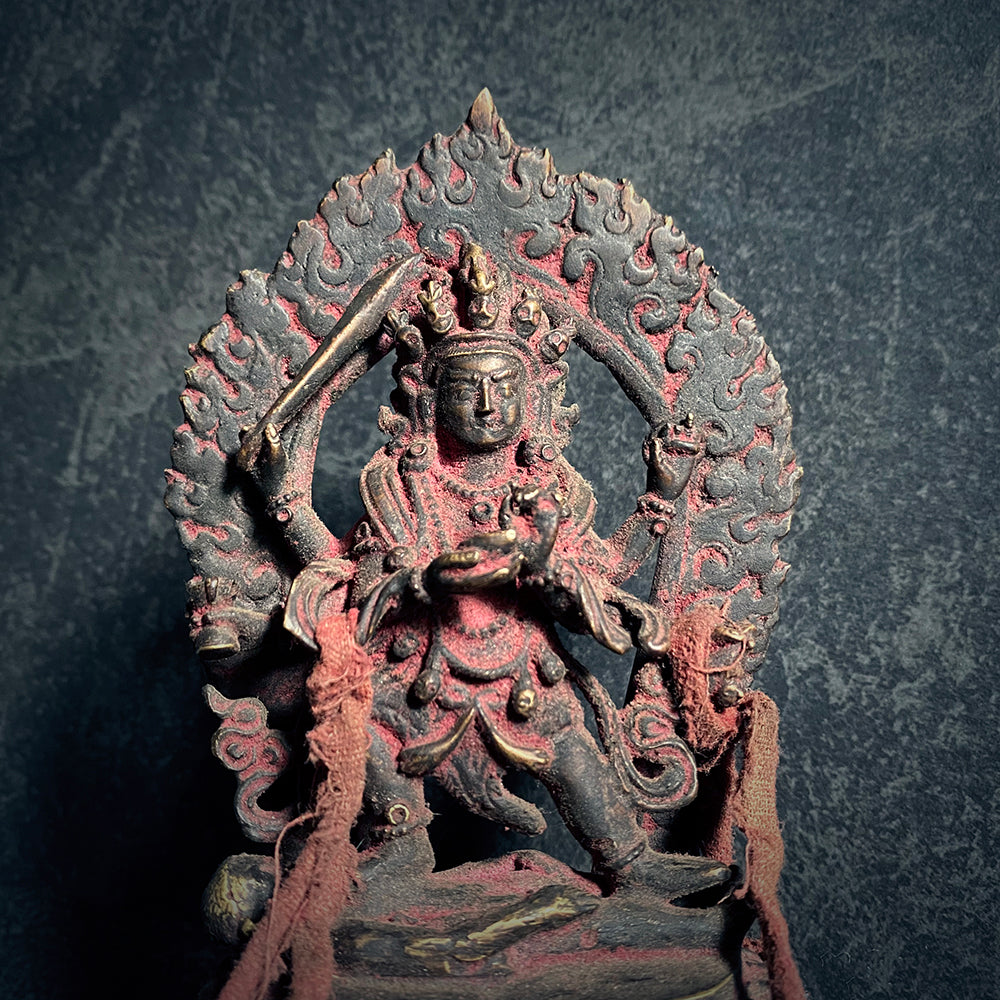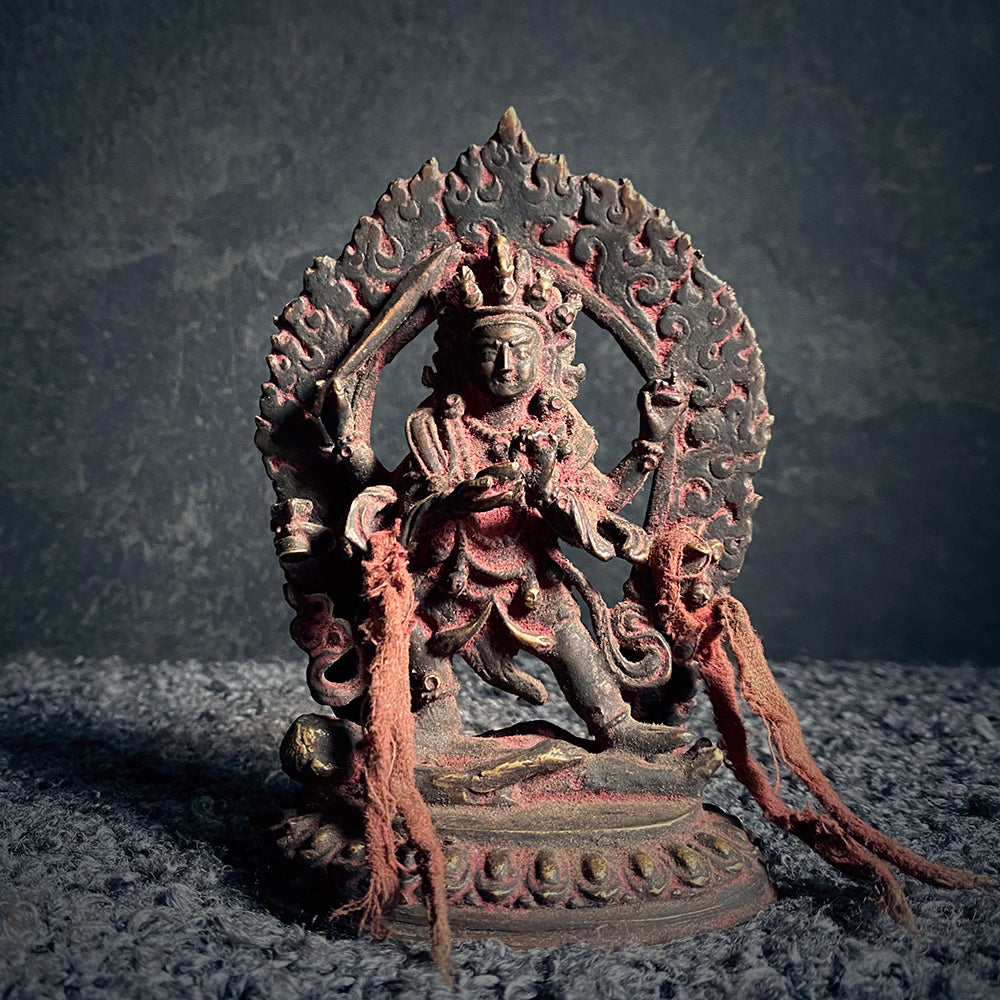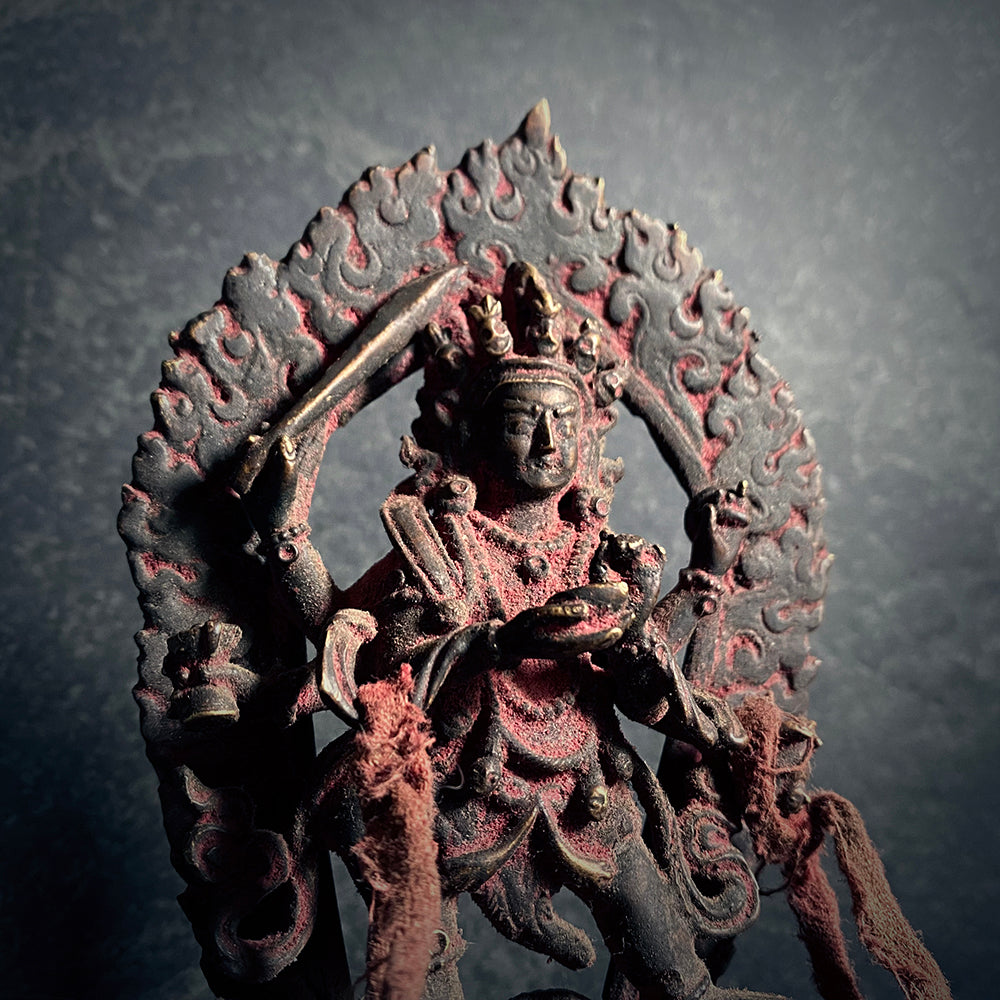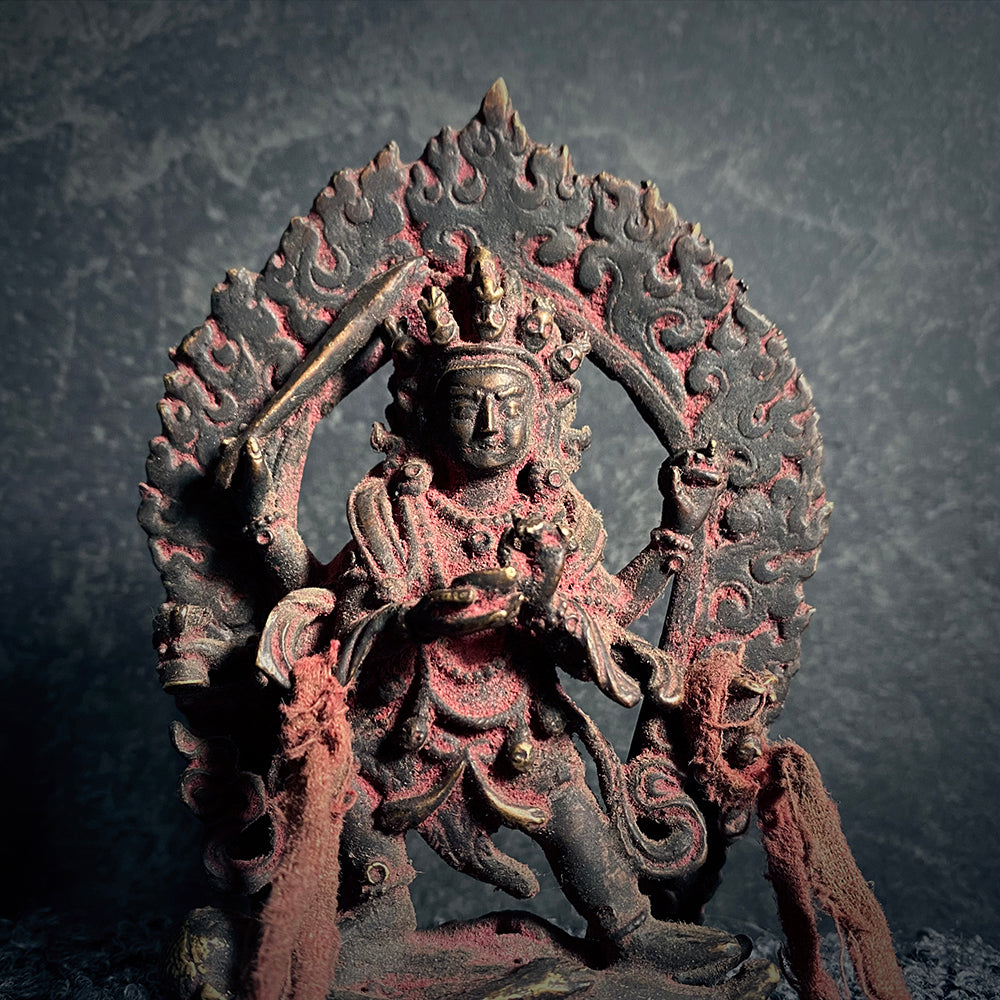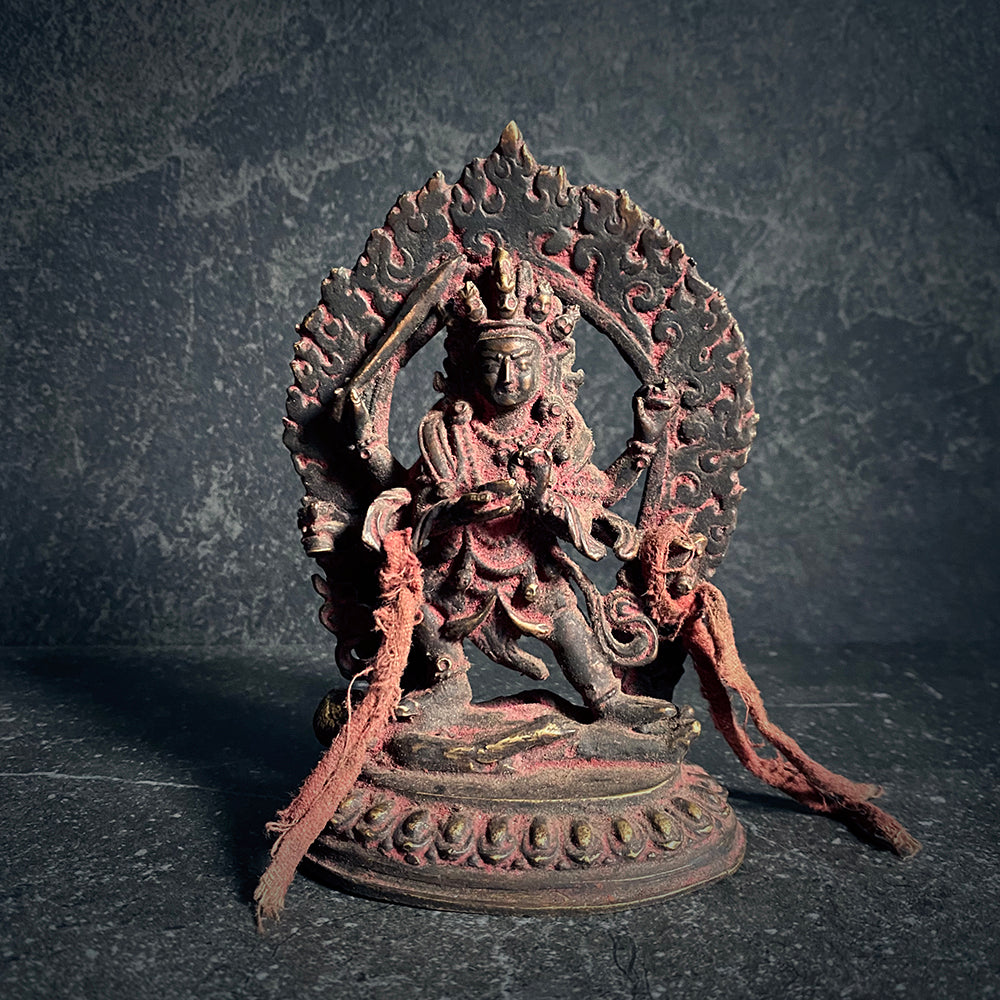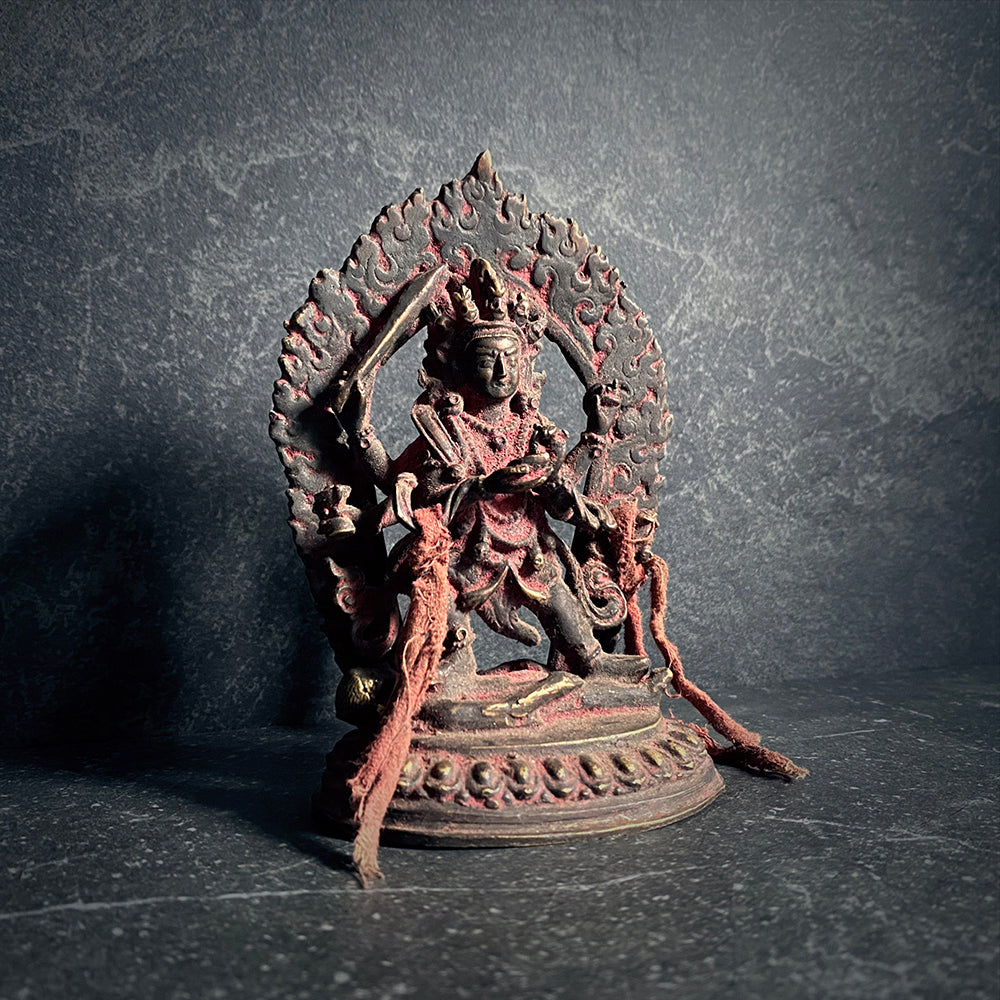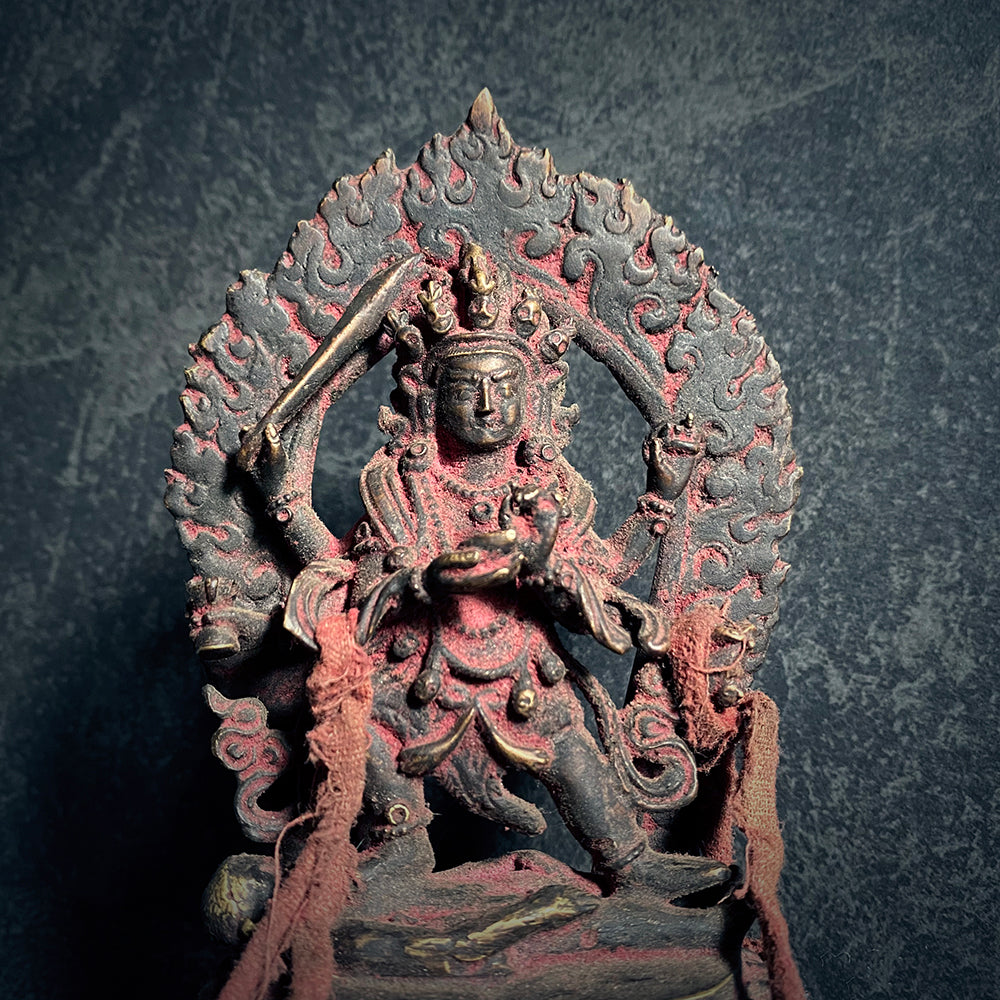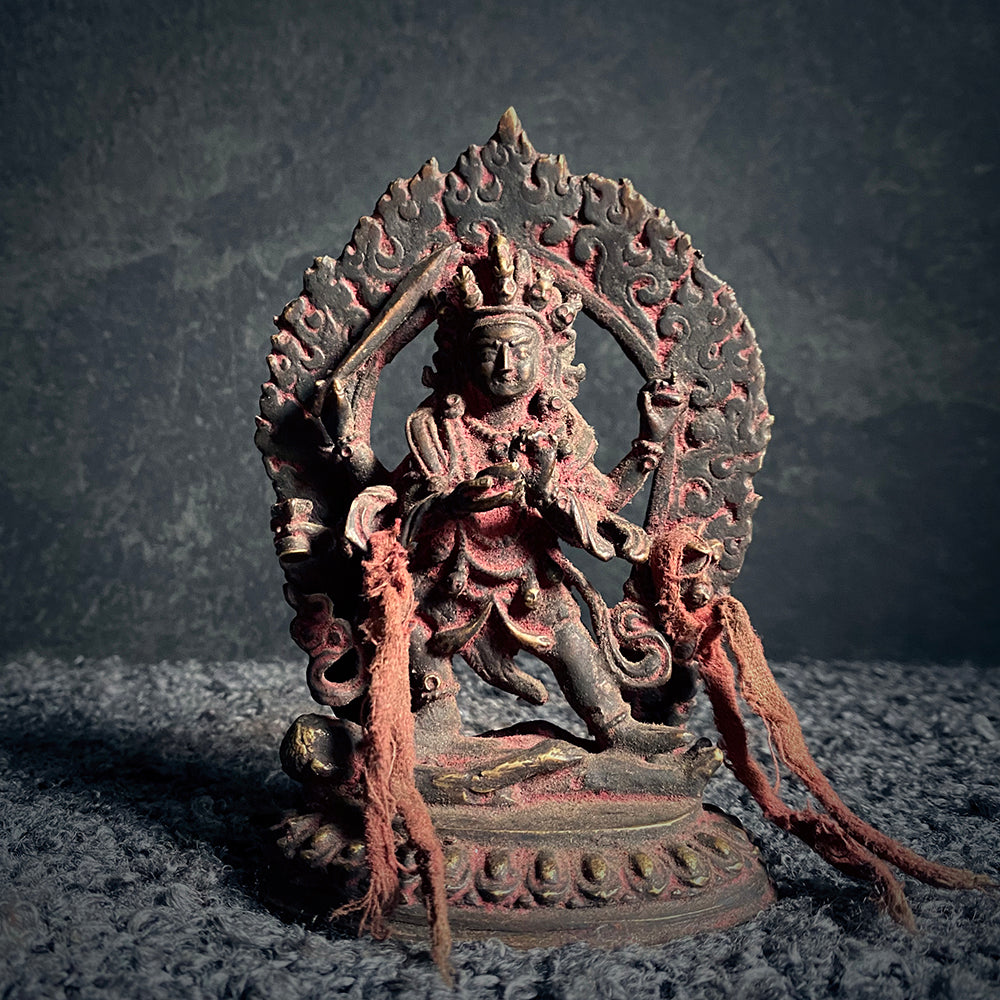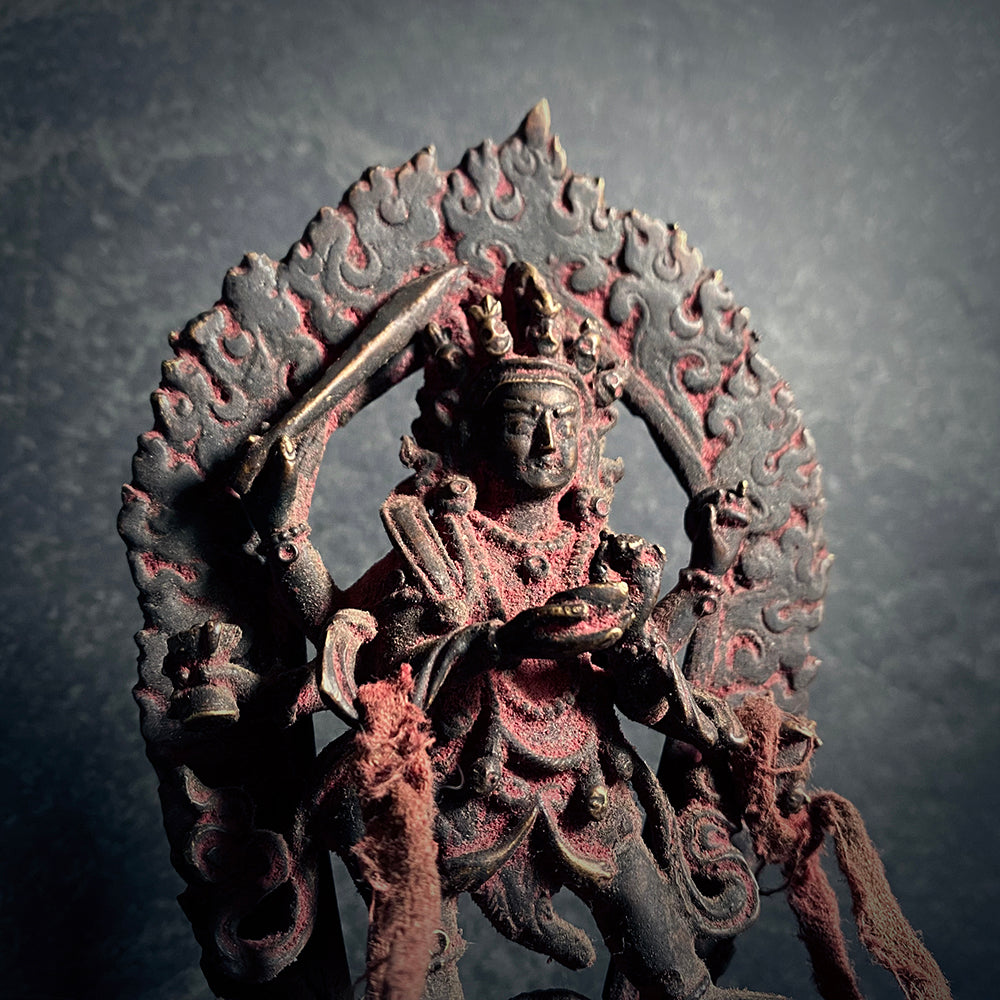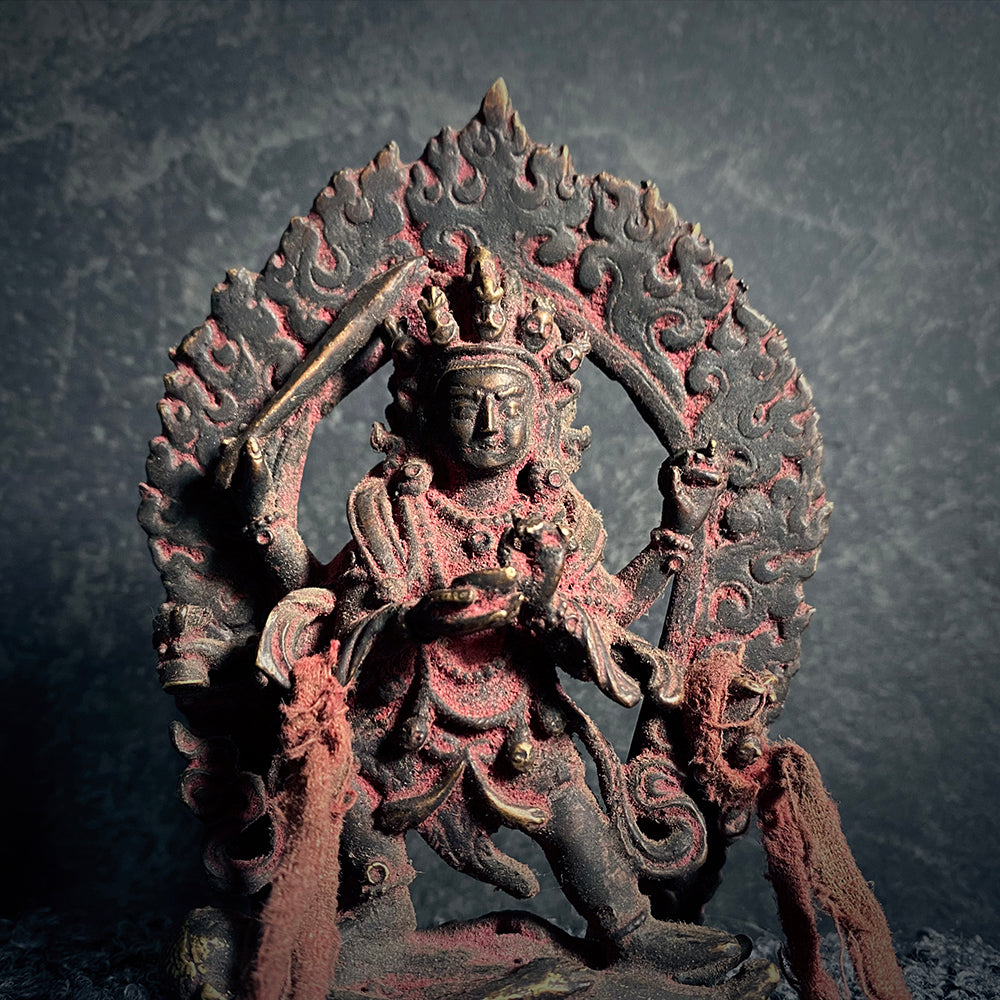TORVENIUS
Mahākāla / Mahakala statue, aged bronze patina edition - RITUAL ITEM
Couldn't load pickup availability
Mahākāla is a Sanskrit bahuvrihi of mahā "great" and kāla "time/death", which means "beyond time" or death. Tibetan: ནག་པོ་ཆེན་པོ།, (THL: nak po chen po) means "Great Black One".
In Buddhism, Mahākāla is regarded as a Dharmapāla ("Protector of the Dharma") and a wrathful manifestation of a Buddha, while in Hinduism, Mahākāla is a fierce manifestation of the Hindu god Shiva and the consort of the goddess Mahākālī;
According to Shaktisamgama Tantra, the spouse of Mahākālī is extremely frightening. Mahākāla has four arms, three eyes and is of the brilliance of 10 million black fires of dissolution, dwells in the midst of eight cremation grounds (śmaśāna). He is adorned with eight human skulls, seated on five corpses, holds a trident (triśūla), a drum, a sword, and a scythe in his hands. He is adorned with ashes from the cremation ground and surrounded by numbers of loudly shrieking vultures and jackals. At his side is his consort, symbolized as Kālī.
Both Mahākāla and Kālī represent the ultimate destructive power of Brahman and they are not bounded by any rules or regulations. They have the power to dissolve even time and space into themselves, and exist as the Void at the dissolution of the universe. They are responsible for the dissolution of the universe at the end of each kalpa. They are also responsible for annihilating great evils and great demons when other Gods, Devas, and even Trimurtis fail to do so. Mahākāla and Kālī annihilate men, women, children, animals, the world, and the entire universe without mercy because they are Kala or Time in the personified form, and Time is not bound by anything, and Time does not show mercy, nor does it wait for anything or anyone. In some parts of Odisha, Jharkhand, and Dooars (that is, in eastern Bengal), wild elephants are worshiped as manifestations of Mahākāla.
Mahākāla is typically depicted blue or black in colour. Just as all colours are absorbed and dissolved into black, all names and forms are said to melt into those of Mahākāla, symbolising his all-embracing, comprehensive nature. Black can also represent the total absence of colour, and again in this case it signifies the nature of Mahākāla as ultimate or absolute reality. This principle is known in Sanskrit as nirguna, beyond all quality and form, and it is typified by both interpretations.
Approx 9 cm wide and 13 cm tall.
Ships worldwide from Sweden!
